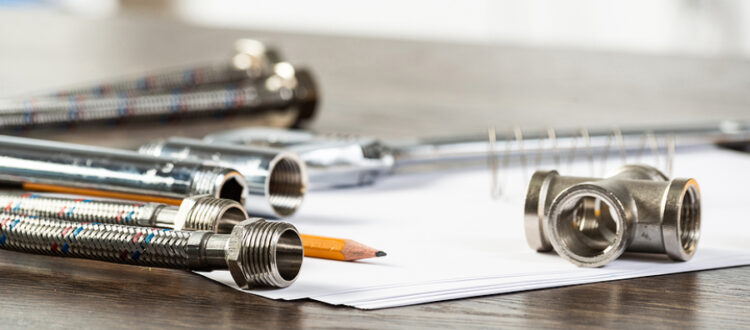Pipe Fittings Compared: Compression Vs Push-To-Connect
In mechanical and plumbing systems, The performance and safety of piping and tubing assemblies often hinge on one critical decision: selecting the right type of pipe fitting in Singapore. Among the most commonly used are compression and push-to-connect fittings; each with distinct advantages tailored to specific operational needs. Understanding these common pipe fitting terminologies, from how they work to where they excel, is vital to choosing the most effective solution for your project.
Why connection choice matters
Choosing the appropriate fitting is far more than a matter of convenience. It directly impacts system integrity, efficiency, and lifespan. A well-matched fitting delivers a leak-proof seal, withstands the system’s pressure and environmental conditions, and minimises downtime due to maintenance or failure. Ultimately, the right choice improves safety, reduces repair costs, and contributes to seamless long-term operation.
Compression fittings: Reliable and rugged
Compression fittings are mechanical connectors used to join piping or tubing without soldering, threading, or welding. These fittings work by tightening a compression nut over a ferrule (or compression ring), which then deforms slightly to grip the pipe and form a tight seal.
Components:
- Compression nut: Secures the fitting and drives compression.
- Ferrule: Creates the seal by deforming around the pipe.
- Seat: The internal surface against which the ferrule compresses.
Advantages:
- Secure, long-lasting connections: Ideal for systems that demand durability and reliability over time.
- Excellent pressure and temperature tolerance: Suitable for high-pressure applications such as gas lines or hydraulic systems.
- Cost-effective: Typically more affordable than alternatives in bulk applications.
- Material flexibility: Can be used with various piping materials, including copper, plastic, and stainless steel.
Limitations:
- Non-reusability: Ferrules must be replaced after disassembly.
- Installation complexity: Requires specific tools and careful alignment.
- Time-consuming assembly: More labour-intensive than push-fit options.
Best applications:
Compression fittings are best suited for permanent installations where disconnection is rare and operating conditions are demanding. They’re frequently used in high-pressure systems, chemical plants, and gas distribution networks, places where robust sealing is non-negotiable.
Push-to-connect fittings: Speed and simplicity
Push-to-connect fittings (also known as push-fit fittings) offer a fast, tool-free way to join pipes and tubing. These fittings feature an internal gripping ring (collet) and an O-ring that together form a secure, leak-resistant connection with a simple push.
How they work:
When the tubing is inserted, the collet’s teeth grip it while the O-ring seals the joint. No additional sealing materials or tools are required.
Advantages:
- Quick and easy installation: Perfect for time-sensitive projects or setups with multiple connections.
- Reusable design: Can be disconnected and reused without damaging the fitting or tubing.
- No special tools needed: Ideal for technicians working in tight or remote areas.
- Compact profile: Suitable for confined spaces or mobile systems.
Limitations:
- Higher unit cost: More expensive upfront compared to compression fittings.
- Lower pressure thresholds: May not be suitable for high-pressure or extreme temperature conditions.
- O-ring degradation: Susceptible to wear over time, especially in chemically aggressive or hot environments.
Best applications:
Push-to-connect fittings shine in pneumatic systems, water treatment setups, and applications requiring frequent changes or rapid assembly. Their ease of use makes them a popular choice in industries aiming to reduce installation time and labour costs, such as automotive repair or food-grade piping systems.
Compression vs push-to-connect: What sets them apart?
The fundamental difference lies in how each pipe fitting is assembled and the demands they’re built to handle. Compression fittings prioritise strength, longevity, and sealing under stress. Push-to-connect fittings focus on convenience, speed, and tool-less reconfiguration.
While compression fittings are typically single-use due to ferrule deformation, push-to-connect options can be reused multiple times, making them advantageous in systems that require frequent rework, inspection, or maintenance.
Key selection criteria
When choosing between compression and push-to-connect fittings, consider the following operational factors:
- Pressure requirements: High-pressure environments favour compression fittings.
- Environmental conditions: For corrosive or outdoor environments, compression fittings provide greater resilience.
- Frequency of disassembly: Choose push-to-connect fittings for systems that require regular maintenance or reconfiguration.
- Budget considerations: Evaluate the total cost, including tools and labour, not just unit price.
- Material compatibility: Ensure the fitting is designed to work with your pipe or tubing material for reliable sealing.
Conclusion
Both compression and push-to-connect fittings offer dependable solutions, but each excels under different circumstances. Compression fittings are ideal for permanent, high-pressure applications requiring durable, tamper-proof connections. Push-to-connect fittings are perfect for dynamic, time-sensitive systems where ease of installation and flexibility are critical. To make an informed decision, thoroughly evaluate your system’s needs to achieve the desired performance, safety, and efficiency across the lifespan of your project.
At Pharmchem Engineering, we combine industry expertise with a wide selection of high-quality, customisable pipe fittings. Whether you’re planning a complex industrial setup or need tailored solutions for factory operations, our team is here to help. Contact us today to discuss how we can support your next project.

